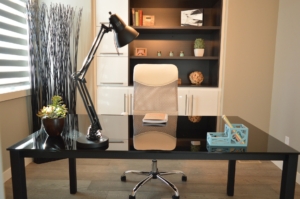Special Tax Considerations When Working from Home

Special Tax Considerations When Working from Home
Many Canadians worked from home for the first time in 2020, which means there will be extra questions to be answered when it comes time to do your taxes. Outlined below is what you need to know about claiming office expenses while working from home.
Canada Revenue Agency (CRA) announced in 2020 that, even if you weren’t ‘required’ to work from home, but your employer provided you with the ‘choice’ to work at home because of COVID-19, CRA will consider you to have been required to work from home for purposes of claiming home office expenses for 2020.
CRA also announced two methods for claiming home office expenses for 2020: the new “temporary flat-rate method” and the “detailed method.”
New temporary flat-rate method
The temporary flat-rate method is a simplified process. You’re eligible to use this new method if you worked more than 50% of the time from home for a period of at least four consecutive weeks in 2020 due to COVID-19.
Under this method, you simply claim $2 for each day you worked from home, up to a maximum of $400 (ie, $2/day for up to 200 working days) per individual. Each individual working from home can use the temporary flat-rate method to calculate their deduction for home office expenses and can each make a separate claim for up to $400.
The benefits of using the flat-rate method are that you don’t have to track and keep any supporting documents to track your expenses nor do you have to allocate any expenses between employment and personal use. In addition, you don’t need a signed T2200S form from your employer.
Detailed method
When using the detailed method, you must have worked from home more than 50% of the time for a period of at least four consecutive weeks in 2020, and have a completed and signed form T2200S (or form T2200) from your employer.
If you choose the detailed method, you’re able to deduct a variety of expenses, such as the cost of rent, electricity, heating, home internet access fees and water, as well as maintenance and minor repair costs. Commissioned employees can also deduct home insurance, property taxes and leasing costs associated with a cell phone, computer, laptop, tablet, fax machine, etc that reasonably relate to earning commission income.
Canada Revenue Agency support forms
- Form T2200S. This form is a declaration of employment for working at home due to COVID-19. This is a shorter version of Form T2200 that you get your employer to complete and sign if you worked from home in 2020 due to the COVID-19 pandemic and aren’t using the temporary flat-rate method. Your employer completes and signs this form to certify that you worked from home in 2020 due to COVID-19 and had to pay your own home office expenses.
- Form T777S. This form is a statement of employment expenses for working from home due to COVID-19. This form is used to calculate your claim for home office expenses.
- Home office expense calculator. CRA created this calculator to help employees calculate home office expenses. CRA has also expanded the list of eligible expenses that can be claimed to include home internet access fees.
Determining your workspace claim
Whether you work at the dining room table or in a spare bedroom, there are a number of factors to consider when calculating your employment use of the workspace, including:
- Hours per week you use the space for work
When filing your taxes, It’s also advised to speak with a tax professional to ensure you maximize your savings.

Leave a Reply
Want to join the discussion?Feel free to contribute!